It’s no secret that America and Europe are vastly different. Though all theme parks are similar in many ways, the contrast between both regions highlights the differences between their parks. After a recent trip to Europe, which included visits to four theme parks, I made note of some of the major differences between parks in Europe and the USA. I’ve been to over 30 parks in the US, and while they range from all different sizes, I’ve been able to figure out what things are excepted from each of them. I’ve only been to five parks in Europe, including one large park, two medium-sized parks and two smaller-scale parks. However, I believe my time at these parks, as well as my existing knowledge of parks I haven’t visited, allowed me to identify their similarities and differences.
In this list, I’ll highlight seven of the biggest differences between theme parks in the US and Europe. For reference, the parks in Europe I visited were Europa Park in Germany as well as four parks in Italy: Cinecitta World, Rainbow Magicland, Mirabilandia and Gardaland.
Big Chains and Independent Parks
Of the top 20 North American theme parks by 2021 attendance, 19 are members of big chains such as Disney, Universal, Cedar Fair, Six Flags and SeaWorld. The lone park that continues to operate independently is Hersheypark. In Europe, there are only 12 of the top 20 are chain parks. By comparison, the American chains are larger. Looking at the larger chains, Cedar Fair and Six Flags operate 11 and 15 amusement parks in North America, respectively, compared to Merlin and Walibi, which operate 16 and 3 parks, respectively — and some of those are smaller family parks.
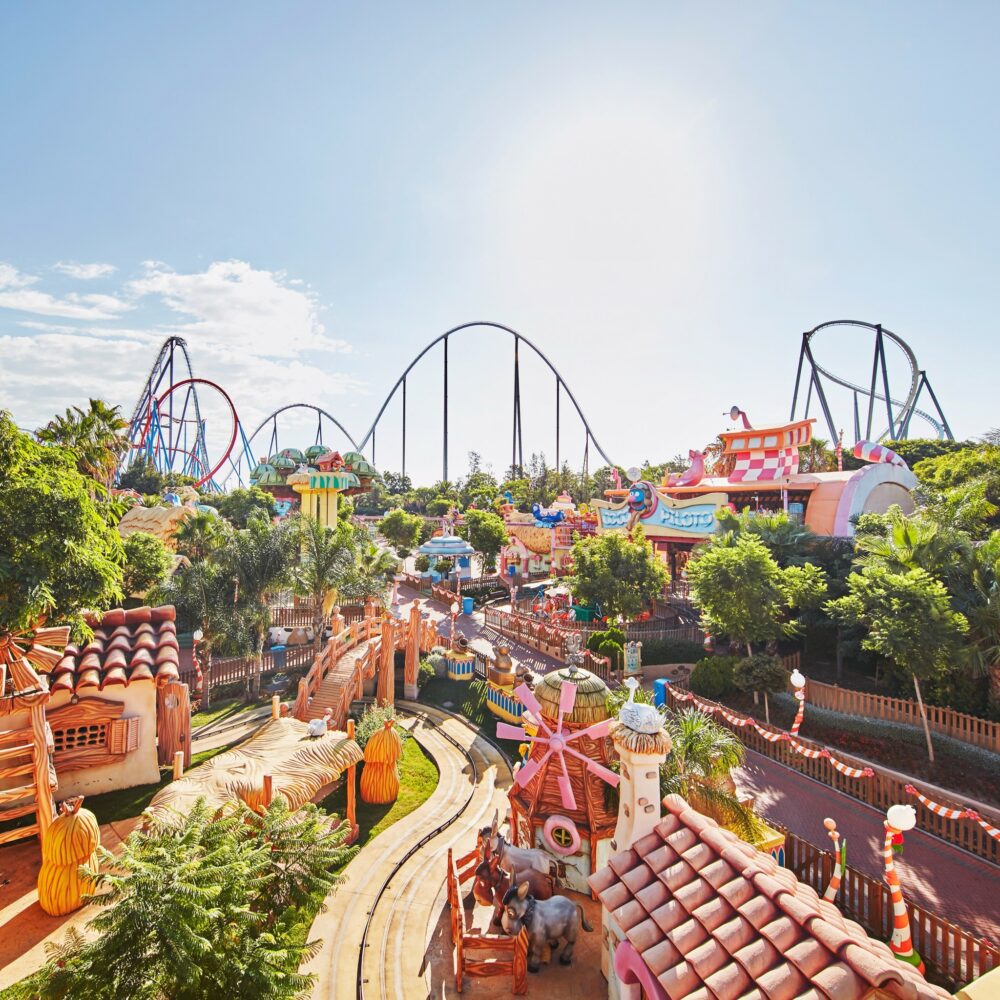
PortAventura World
In general, the more popular American parks are typically owned and operated by chains as compared to Europe where there is a larger percentage of privately owned parks. There are some major differences between large American chain parks and independent European parks, such as pricing, ride sizes and extra shops and stalls.
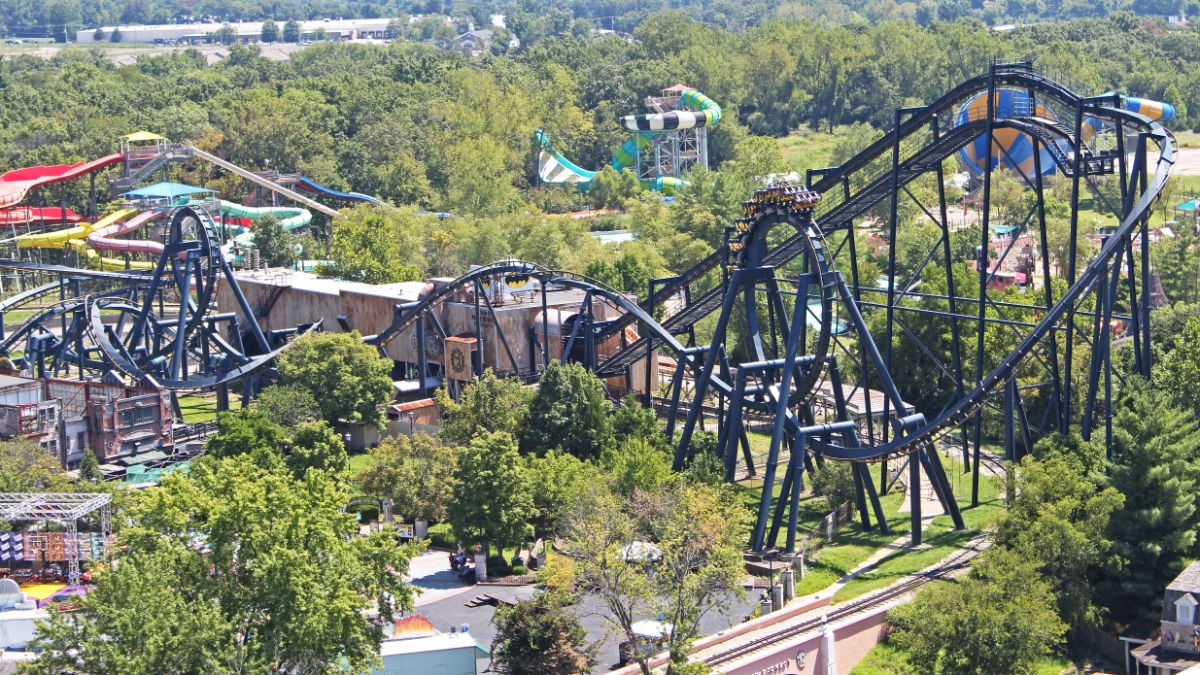
Batman: The Ride “clones” can be found at Six Flags parks across the country.
There are plenty of smaller differences as well. American chains typically install many identical ride models and coasters at their parks (commonly referred to as “clones”), while European parks tend to have more unique attractions. American amusement parks aren’t afraid to flaunt sponsors, whereas European parks tend to minimize advertisements.
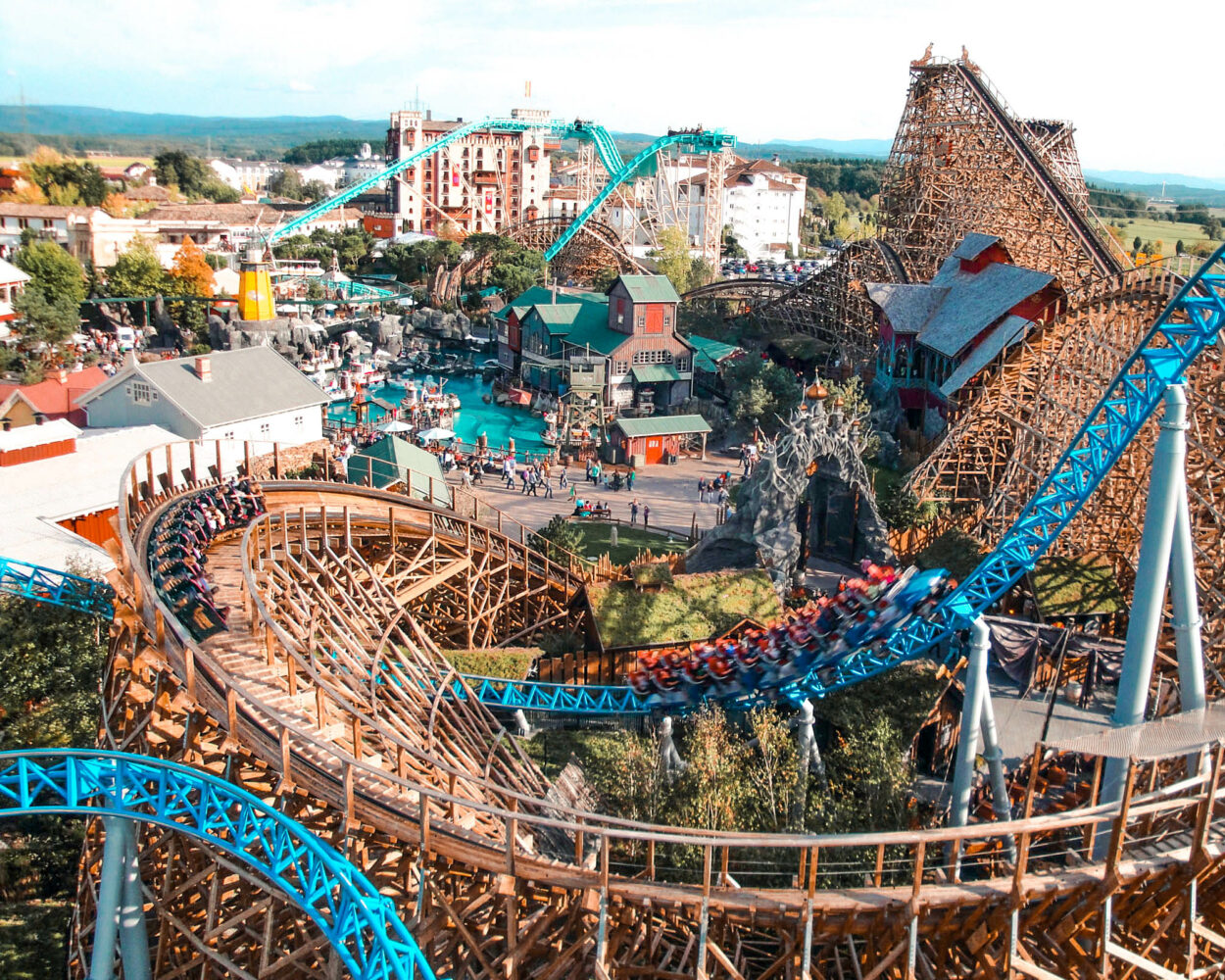
So while there are some big chain parks in Europe and some independent parks in North America, there is a clear difference when stepping into an American chain park like Six Flags Magic Mountain versus an independent European park such as Europa Park.
Park Size
In America, there’s a saying that goes “Everything is bigger in Texas.” Outside of America, that saying just goes “Everything is bigger in America.” The size of parks in the USA is a perfect example. Parks in the US often have more space, bigger paths, more structures and more rides. That extends beyond the guest spaces, including bigger facilities, bigger parking lots and more staff buildings.
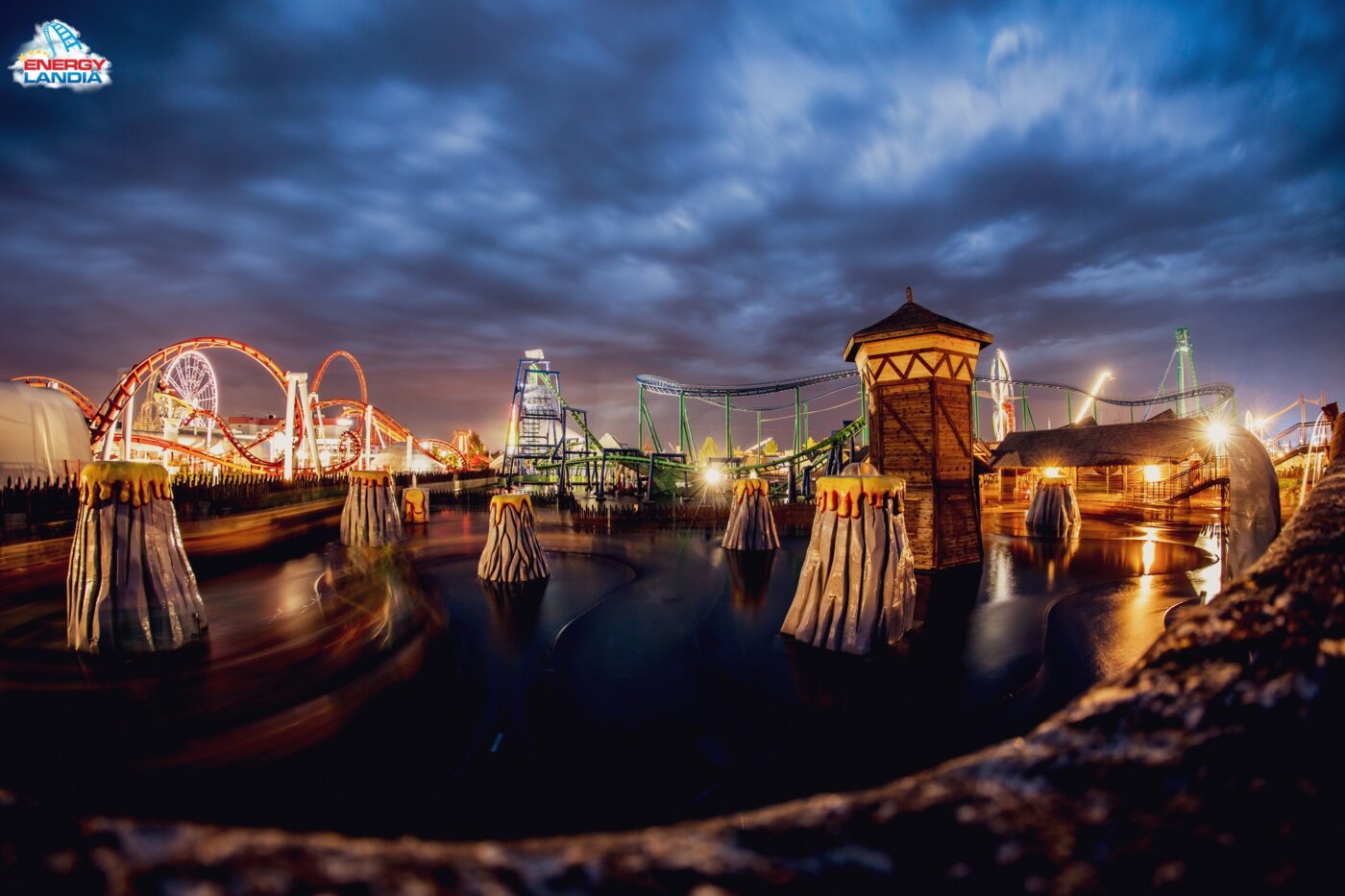
EnergyLandia
Some European parks are just as big and continue to grow, like Energylandia and Port Aventura, but most parks are comparatively smaller — think the sizes of Holiday World and Dorney Park. A lot of those are quality parks, but they likely won’t grow in area in the near future. Some of that is due to budget, while some of it also has to do with local laws regarding land usage.
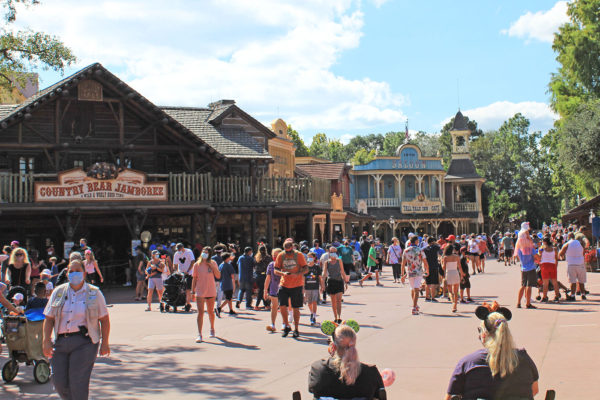
The difference in the sizes of the parks doesn’t have a large impact, though, as many of the larger American parks are filled with more shops and flat rides. Some very large parks, like Six Flags Great Adventure, feel like they have too many rides, with smaller flat rides and game stalls failing to attract visitors because of the vast number of other offerings around the park. In contrast, a European park may offer fewer rides, but there is still enough to fill a day with plenty of different activities and experiences. So while American parks are generally larger, visiting a park in either continent will offer plenty enough to occupy your day.
Attraction Size
Along with featuring larger parks, America also loves to build bigger coasters. While some European parks feature some massive coasters, like Shambhala at PortAventura Park in Spain or Silver Star at Europa Park, many American parks on average feature larger coasters. North America has more than 30 coasters at least 200 feet tall, compared to only nine in Europe. North America also has 25 coasters with at least 5,000 feet of track, compared to Europe’s four coasters. For a stat that I think demonstrates the quantity and scale difference between the two regions, Europe has four Bolliger and Mabillard (B&M) dive coasters (with an average drop of 149 feet) compared to the six in North America, which average 192 feet.
While American coasters are typically larger in scale, European coasters typically have unique advantages. With smaller layouts, many European coasters feature faster pacing and tighter elements to make for more forceful rides. Coasters such as Black Mamba at Phantasialand in Germany and Nemesis at Alton Towers in the UK hug their terrain while hurling riders through a fast-paced layout. Expedition GeForce at Holiday Park in Germany, which is smaller than American hypercoaster models, makes use of sharper airtime hills and tighter over-banked turns to make for more intense elements.
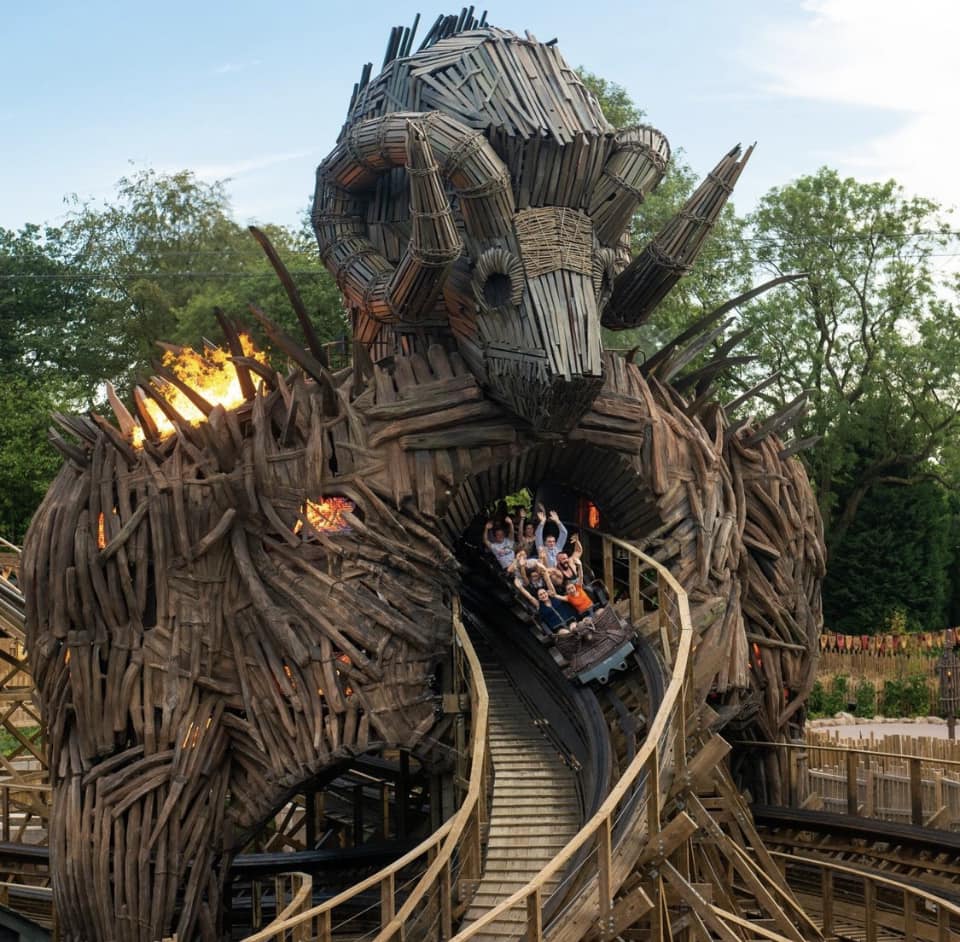
Wickerman at Alton Towers
European coasters also make up for their smaller sizes with theming. Some coasters, like Taron and F.L.Y. (both at Phantasialand, feature highly immersive settings that put them on the same tier as Disney and Universal attractions. Other coasters, however, typically also feature a much higher level of theming than American coasters. The wooden statues of Wickerman at Alton Towers and the apocalyptic setting of Swarm at Thorpe Park in the UK, and diving into the mouth of a Kraken on Krake at Heide Park in Germany, are all prime examples of the extra ambiance provided by European coasters.
Despite my love of theming and the extra creative touch many European coasters feature, I still prefer the larger American coasters and the thrills they deliver.
Park Theming
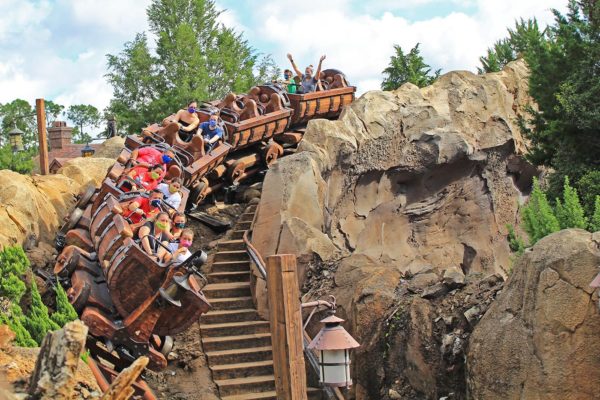
In America, theming is a choice. Disney and Universal parks have always set the bar, but parks like Dollywood, Busch Gardens and Silver Dollar City make an impressive effort as well. Smaller parks as well as larger chains, like Six Flags and Cedar Fair, however, tend to focus on the rides and reserve little of the budget for theming. In Europe, theming attractions and keeping consistent quality around the park is seemingly an unwritten requirement.
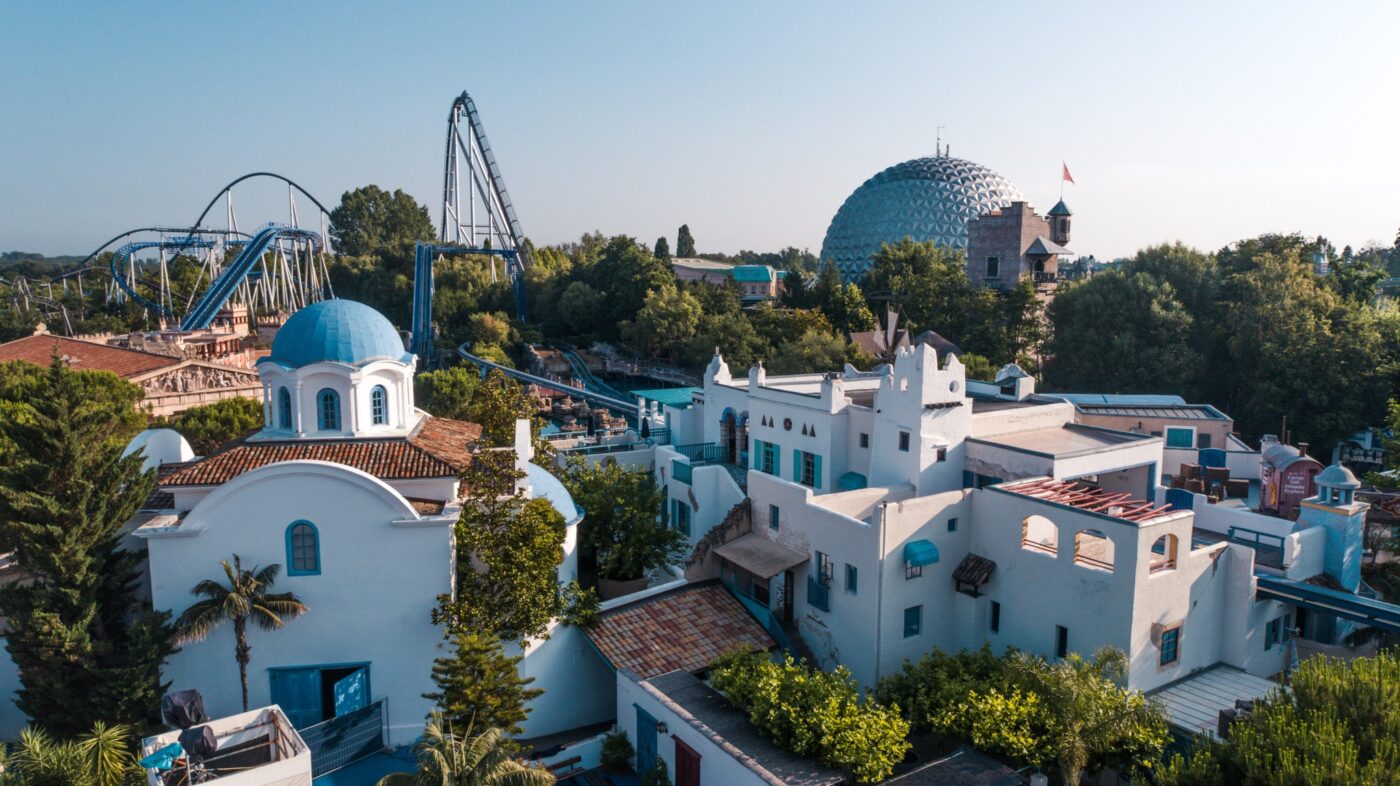
While there can be a broad spectrum when it comes to the level of theming — comparing Europa Park to Mirabilandia, for example — there is always a thoughtful effort put forth. Put simply, European parks on average are well-themed, while most American parks either aren’t themed or have world-class theming.
When it comes to theming, no matter what level of quality, European parks seem to focus on tighter pathways flanked by small structures and greenery to immerse guests, while American parks often use large asphalt or concrete plazas surrounded by large structures. For example, the northern side of Magicland’s layout features narrow paths with foliage and two-story themed facades standing just on the edge. The close proximity of these barriers makes them appear larger to guests, which creates a more immersive setting.
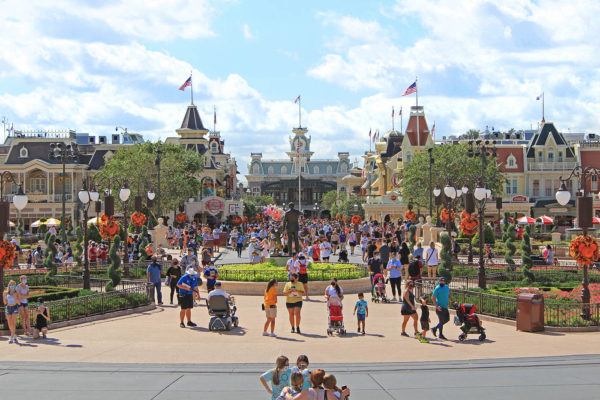
In the US, large plazas like the hub at Walt Disney World’s Magic Kingdom might not be as immersive but still impress with their massive scale.
I prefer the tight pathways and close-up interaction with immersive set pieces found in the European parks, but I realize that the US parks are more inclined to build larger paths and plazas due to their larger crowd levels.
Storytelling
“Story” is a major buzzword when it comes to creating immersive attractions for Disney and Universal parks. Designers often approach creating an attraction by prioritizing the story of the ride, which entails creating characters, a setting and a plot. Prioritizing the story often results in screens that display story beats, animatronic characters and audio throughout the ride. While these experiences are typically unique to Disney and Universal parks due to larger budgets, there are examples of this same approach seen in attractions at other parks.
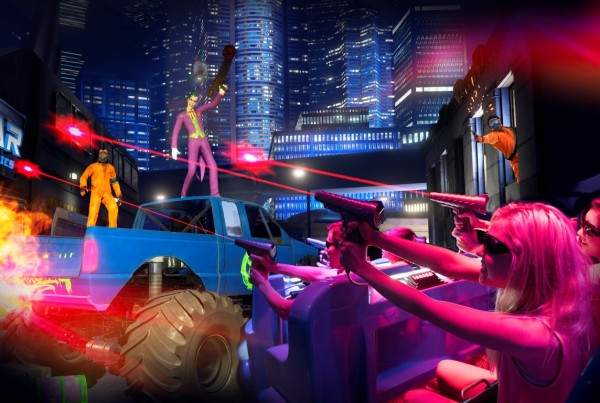
Justice League: Battle for Metropolis
The Justice League: Battle for Metropolis attraction, clones of which can be found at several Six Flags parks, is a prime example as well as the Volcanu ride opening at the Lost Island Theme Park in Iowa.
The European approach relies less on audio and a cohesive plot, instead creating more of a scenic ride. This isn’t a bad thing, as it lets the ride system itself shine and doesn’t force the layout to follow specific scenes.
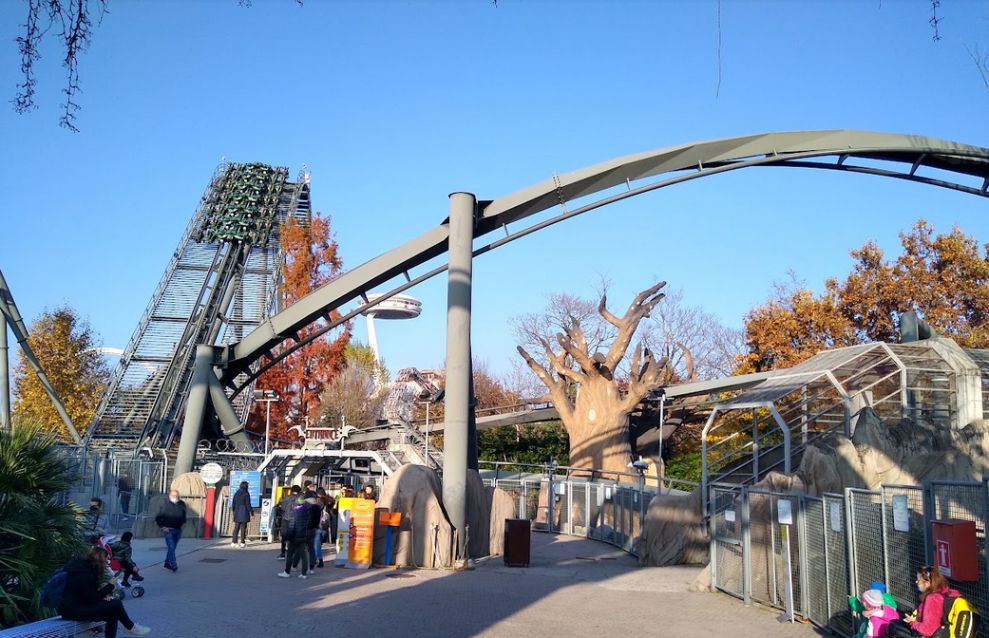
Raptor at Gardaland is a great example of a ride story being portrayed only through visuals. The coaster puts guests on the wings of a creature that is kept in a high-security containment facility. The story of the monster breaking out is portrayed through sirens, wrecked walls and a destroyed lookout tower. It’s all implied — there are no animatronics or screens. The attraction’s emphasis is on the coaster itself, and the props just add to the experience.
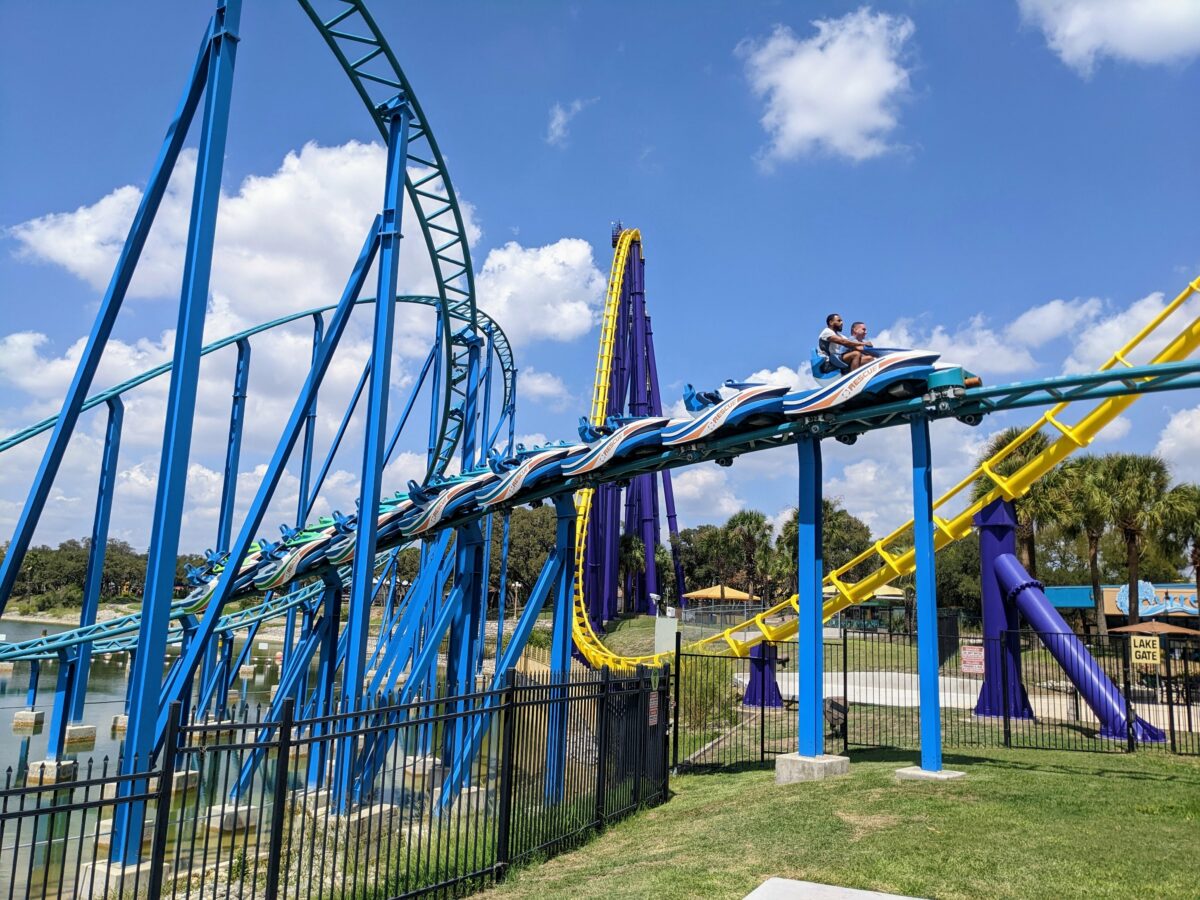
Wave Breaker at SeaWorld San Antonio
Compare that experience to an American coaster like Wave Breaker: The Rescue Coaster at SeaWorld San Antonio. The family launch coaster features a pre-launch scene in a shed that features a projection screen and audio that explains you are going on a rescue mission. But the story ends there — the rest of the ride is simply a roller coaster. While some may enjoy the addition of a pre-launch video as part of the ride, I think the visual implication approach works just as well.
Operations and Staff
Rides and scenery often determine the overall guest experience at a park, but staff and operations are key factors as well. The major difference isn’t how they contrast, but rather the distinct improvement by the American parks. European parks do their best, and staff members for the most part are pleasant, but overall, from my experience, the Europeans just don’t meet the efficiency of US parks. Comparing operations isn’t something so easily statistically proven, but I noticed similar trends throughout parks in their respective continents.
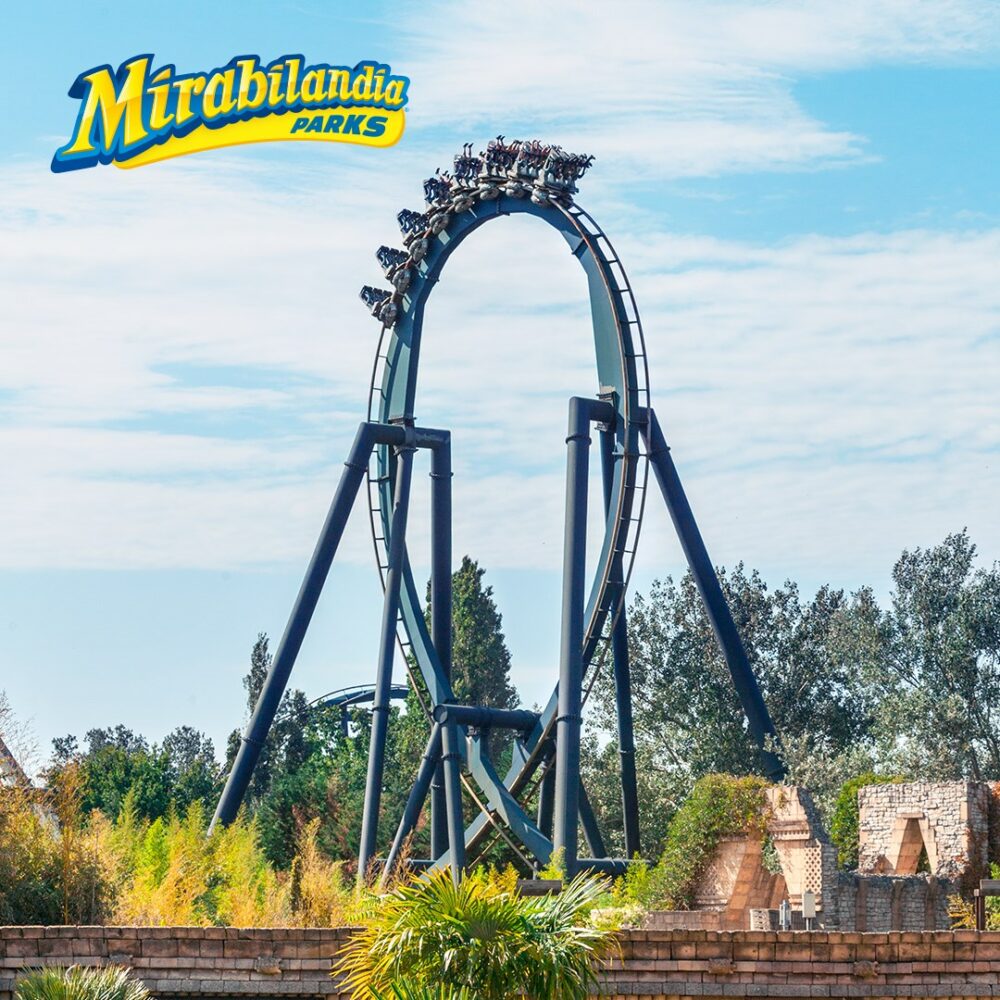
Katun at Mirabilandia
From the parks I visited in Europe, the operations weren’t bad, but they could have been much better. In most cases, dispatches were slow and vehicles often had empty seats. I also noticed several rides running fewer trains or vehicles than they should be given their available capacity. Shock and Time Machine at Magicland; iSpeed and Katun at Mirabilandia and Altair and Inferno at Cinecitta World were all missing trains or cars which led to longer wait times. At Gardaland, Oblivion and Raptor ran two trains but only filled one, also resulting in longer waits.
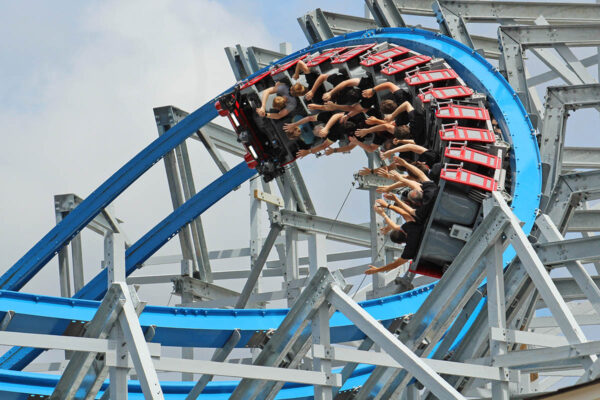
Some of these inefficiencies were also due to a lack of staff in general. Most rides contained only three operators that worked in the station. Compare this to many chain parks in America that staff at least five operators in the station, another one or two groupers (staff who assign incoming guests into rows to maximize capacity), and likely someone at the queue entrance. Disney and Universal parks might even see upwards of 25 people operating one ride. European operators deserve credit for working hard to operate an entire attraction as part of a small group, but the average European park struggles to match the operational efficiency of American parks.
Intellectual Property and Unique Characters
Intellectual properties, commonly referred to as “IPs,” are more prevalent than ever in American parks. While parks always featured characters and franchises from pop culture, such as Batman at Six Flags or Top Gun at Carowinds (when it was a Paramount park), it seems big chain parks worry that not including an IP will result in less ridership.
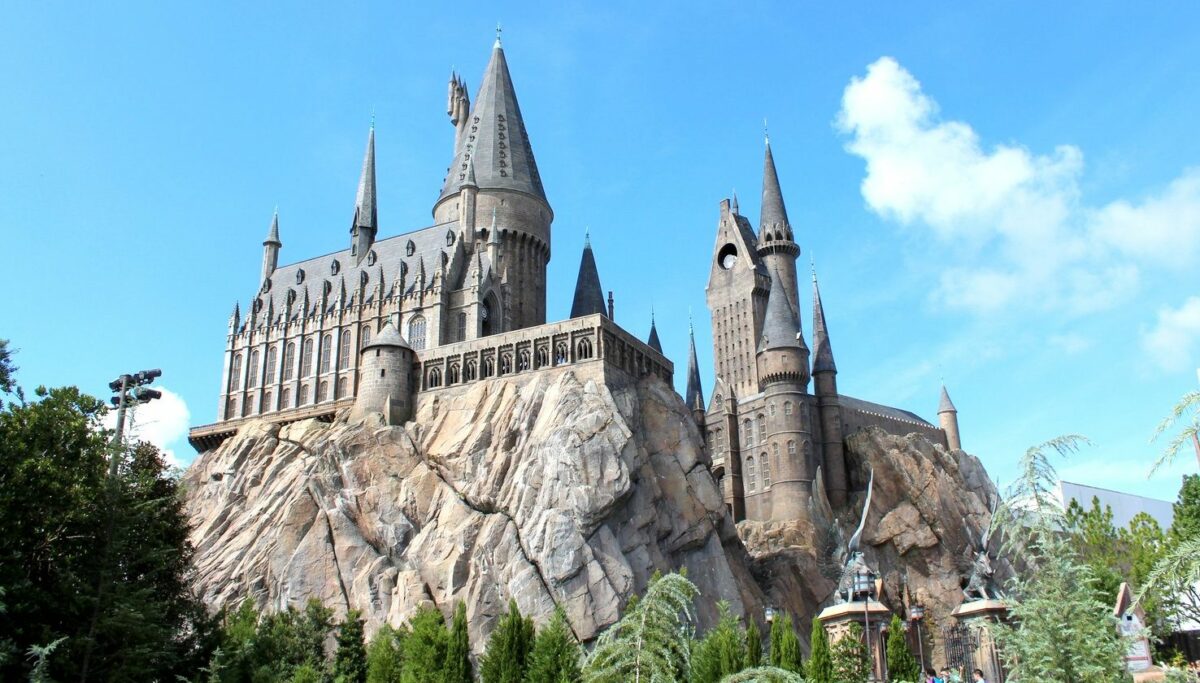
Once it was realized how popular Wizarding World of Harry Potter – Hogsmeade at Universal’s Islands of Adventure became, Disney, Six Flags and other parks raced to add IPs to their latest rides. Now it’s just the regular thing to do.
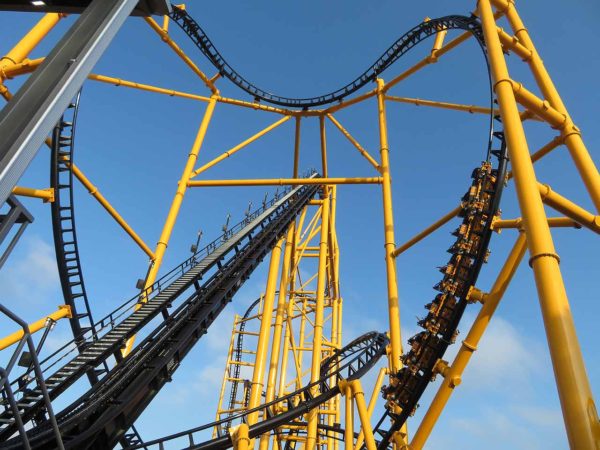
Steel Curtain at Kennywood
Many Six Flags attractions now use DC Comics characters, most newer Disney attractions are now directly tied to new or established movie or television releases and even parks like Kennywood have partnered with the Pittsburg Steelers NFL team to create rides like Steel Curtain. There are occasions where a new attraction doesn’t contain an IP, such as the new Space 220 restaurant at Epcot or Twisted Cyclone at Six Flags Over Georgia. Cedar Point also does well creating unique stories, as seen in Copperhead Strike at Carowinds. Aside from a few rides, the American theme park industry is currently largely reliant on IPs.
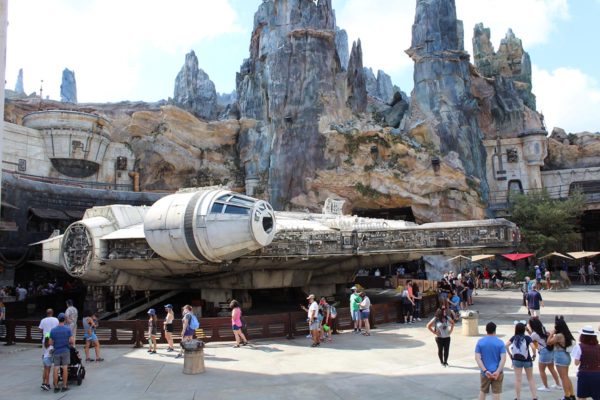
Star Wars: Galaxy’s Edge
That’s not entirely a bad thing, as big-budget attractions and immersive lands are wonderful places for fans of certain franchises. Many like myself were blown away by the Wizarding World of Harry Potter. Star Wars: Galaxy’s Edge, Pandora – The World of Avatar, and Cars Land are also brilliant experiences. However, a part of me wishes there were also entirely unique worlds created just for a park.
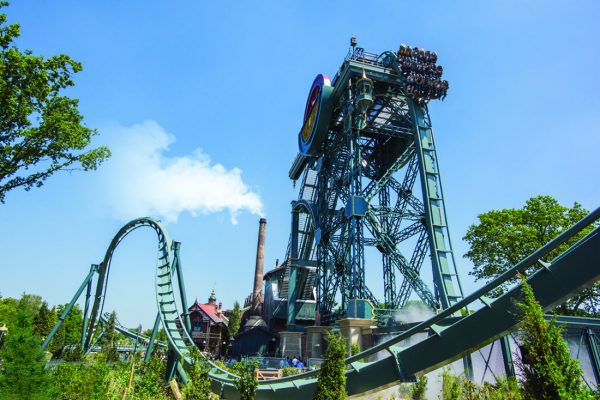
Baron 1898 at Efteling
Europe is on the flip side. Since most parks aren’t owned by larger entertainment companies, they don’t have access to many IPs. This results in parks creating their own stories for rides and even mascots that roam the parks. Baron 1898 at Efteling is a B&M dive coaster themed to a haunted mine, complete with a custom support structure and a stunning queue. Wodan Timbur Coaster at Europa Park is themed to Norse mythology and features a mystical queue featuring statues of the deities. Europa Park also created its own ensemble of characters that are featured in several attractions at the park. Phantasialand has built back-to-back immersive areas, Klugheim and Rookburgh, that are fictional settings created entirely for the park alone.
I hope to see more rides and immersive lands that feature their own unique theme in the future, keeping alive the creative vision of many park designers. However, it does seem like the success of American attractions relying on IPs is slowly making its way to Europe, particularly through Merlin Entertainments. Gardaland features a Kung Fu Panda-themed coaster and is currently building a Jumanji-themed ride.
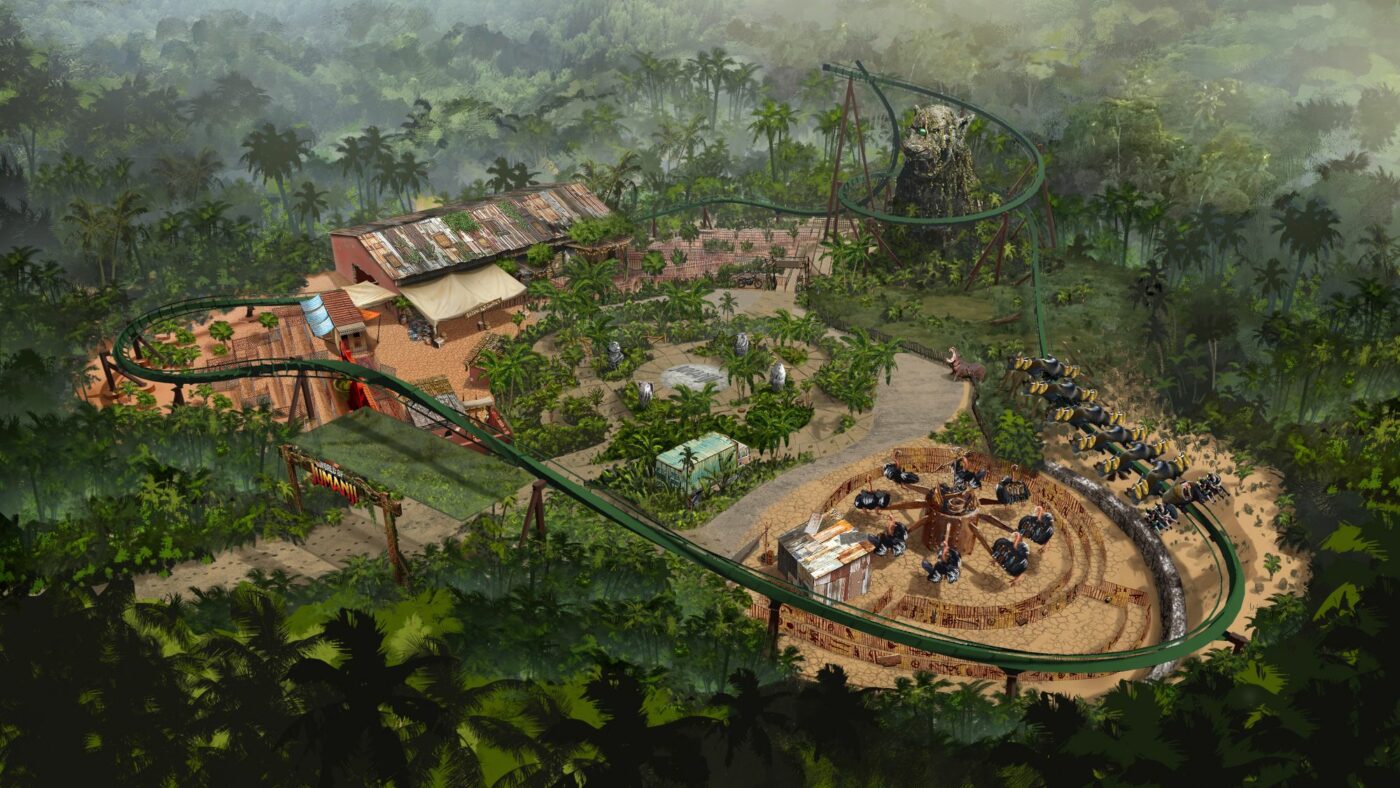
World of Jumanji at Chessington World of Adventures
Chessington World of Adventure is also adding a small-scale Jumanji area. Merlin has also brought the Peppa Pig property to a number of its resorts. If these new rides see more popularity than original concepts such as Wickerman or Oblivion, it could snowball into a swarm of IPs making their way into European attractions.
While theme parks around the globe share a lot in common, there are clearly some major differences between European and American parks.
What other differences have you noticed between American and European parks? Let us know in the comments section below!

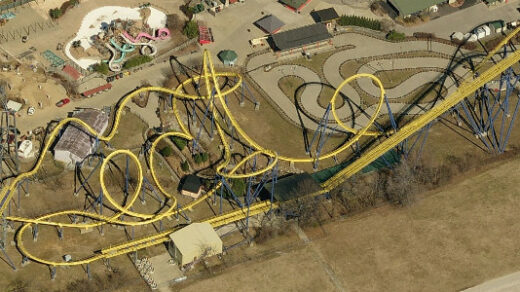
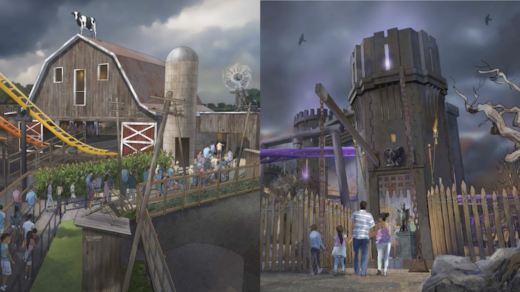
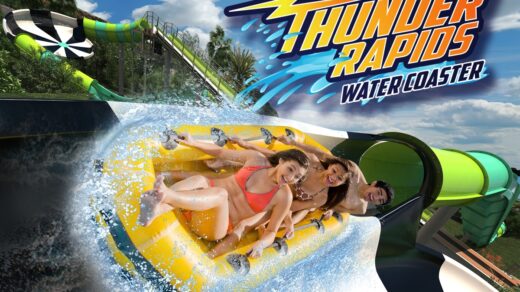




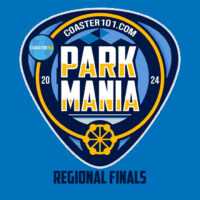
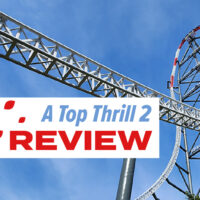
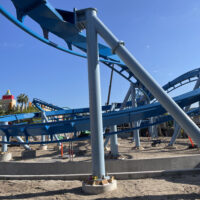




Recent Discussion